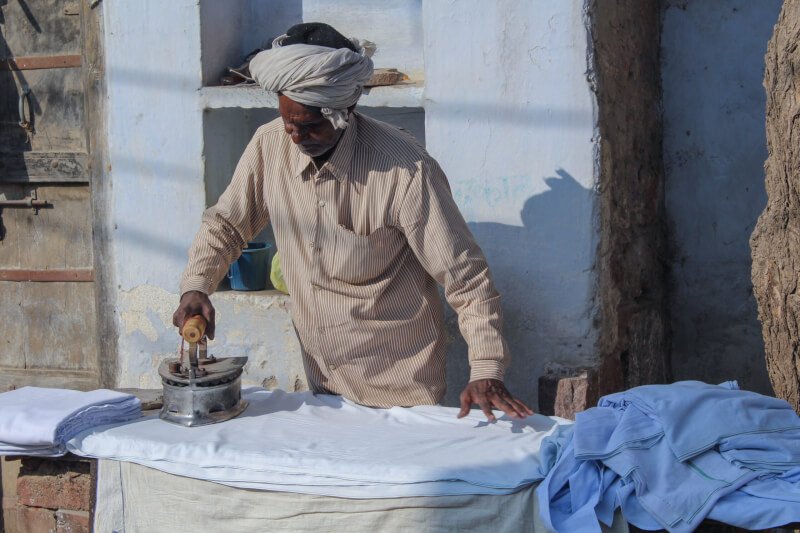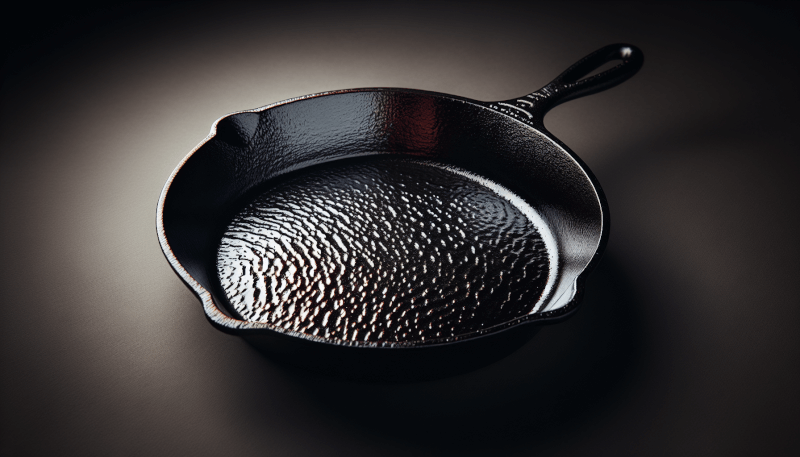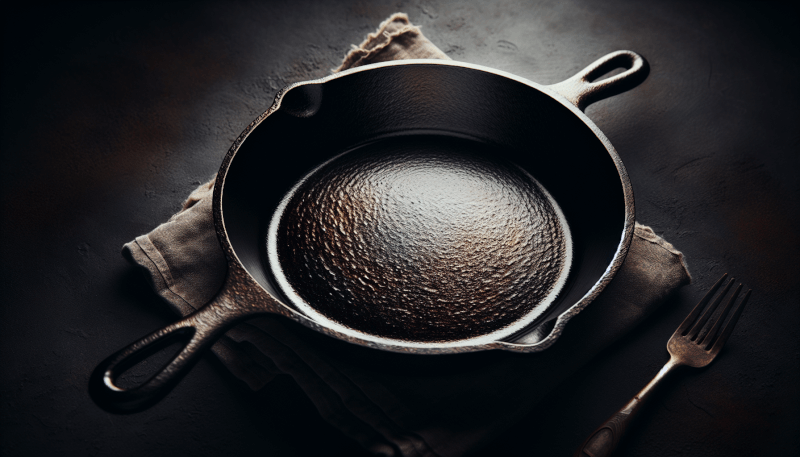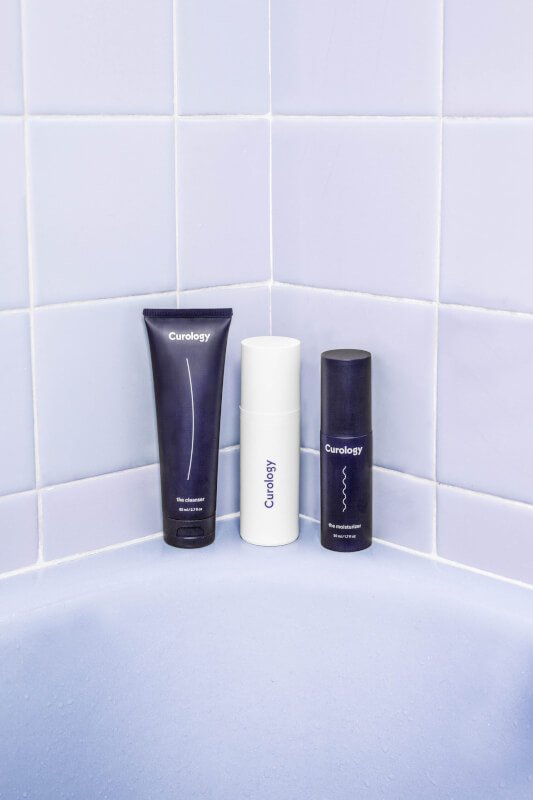If you’re a fan of cooking, chances are you’ve heard about the wonders of cast iron pans. These iconic kitchen tools are not only excellent heat conductors, ensuring even cooking, but they also develop a natural non-stick surface over time. However, if you’re new to the cast iron world, you may be wondering how to properly season and care for these pans to keep them in tip-top shape. Well, look no further! In this article, we’ll walk you through the process of seasoning your cast iron pans and share some expert tips on how to maintain and care for them, so you can enjoy cooking with these timeless beauties for years to come.

Seasoning a Cast Iron Pan
Why is seasoning important?
Seasoning is a crucial step in maintaining and caring for your cast iron pan. When you season a cast iron pan, you are essentially creating a natural non-stick surface by forming a layer of polymerized oil on the surface of the pan. This thin layer helps prevent food from sticking to the pan and also protects it from rust and corrosion. The seasoning also adds flavor and depth to your dishes over time, making each meal more delicious.
How often should I season my cast iron pan?
The frequency of seasoning depends on how frequently you use your cast iron pan and how well it has been maintained. As a general rule, it is recommended to season your cast iron pan every few months or as needed. The more frequently you use your pan, the more often you may need to season it. Regular use and proper care will help build up the seasoning and maintain its effectiveness.
Step-by-step guide to seasoning a cast iron pan
- Start by thoroughly cleaning your cast iron pan with hot water and a brush or sponge. Avoid using soap, as it can strip away the seasoning.
- Once the pan is clean, dry it thoroughly with a clean towel.
- Preheat your oven to 375°F (190°C).
- Apply a thin layer of oil or solid shortening to the entire surface of the pan, including the handle.
- Use a paper towel to remove any excess oil, ensuring a thin and even coating.
- Place the pan upside down on the middle rack of your preheated oven.
- Put a baking sheet or foil underneath the rack to catch any dripping oil.
- Bake the pan for one hour.
- After one hour, turn off the oven and let the pan cool down inside the oven.
- Once the pan has cooled down, it is ready to be used. The more you cook with it, the better the seasoning will become.
Tips for maintaining a well-seasoned cast iron pan
- To avoid damaging the seasoning, use gentle utensils when cooking in your cast iron pan.
- After each use, rinse the pan with hot water and use a brush or sponge to remove any food residue. Avoid using soap, as it can strip away the seasoning.
- Dry the pan thoroughly before storing it to prevent rust.
- Apply a light coating of oil or shortening to the pan after cleaning and drying it. This helps maintain the seasoning and prevent rust.
- If your pan develops rust or the seasoning becomes damaged, it may be necessary to restore the seasoning.
Caring for a Cast Iron Pan
Cleaning a cast iron pan
Cleaning your cast iron pan properly is essential for maintaining its seasoning. Here’s a step-by-step guide to cleaning your cast iron pan:
- Once you’ve finished using your pan, rinse it with hot water immediately. Avoid using soap as it can remove the seasoning.
- Use a brush or sponge to remove any food residue. You can also use coarse salt to aid in scrubbing.
- If there are stubborn food remnants, you can boil some water in the pan to help loosen them.
- Rinse the pan thoroughly and dry it completely with a towel.
- To remove any remaining moisture, place the pan on the stove over medium heat for a few minutes until it is completely dry.
- Once the pan is dry, apply a light coating of oil to the surface to protect it from rust.
Storing a cast iron pan
Properly storing your cast iron pan is essential to prevent rust and maintain its seasoning. Here are some tips for storing your cast iron pan:
- Ensure that your cast iron pan is completely dry before storing it. Any moisture can lead to rust.
- Apply a light coating of oil or shortening to the pan to create a protective barrier.
- Store the pan in a dry place, away from any moisture or humidity.
- Avoid stacking other heavy items on top of your cast iron pan, as this can cause damage to the seasoning.
Restoring a cast iron pan
If your cast iron pan develops rust or the seasoning becomes damaged, it may be necessary to restore it. Here’s how you can restore a cast iron pan:
- Start by scrubbing the pan with a brush or sponge to remove any rust or damaged seasoning.
- If the rust is severe, you can use steel wool or a scrub brush to remove it.
- Rinse the pan with hot water to remove any debris.
- Dry the pan completely with a towel.
- Apply a thin layer of oil or shortening to the pan, ensuring an even coating.
- Preheat your oven to 375°F (190°C).
- Place the pan upside down on the middle rack of the oven.
- Bake the pan for one hour.
- After one hour, turn off the oven and let the pan cool down inside the oven.
- Once the pan is cool, it is ready to be used again.
Common mistakes to avoid when caring for cast iron pans
To ensure the longevity and effectiveness of your cast iron pan, it’s important to avoid these common mistakes:
- Using soap to clean your pan: Soap can strip away the seasoning, so it’s best to use hot water and a brush or sponge to clean your cast iron pan.
- Soaking your pan in water: Extended exposure to water can cause rust, so avoid soaking your cast iron pan for long periods.
- Not drying the pan properly: Moisture is the enemy of a well-seasoned cast iron pan. Make sure to dry it thoroughly after each use.
- Using metal utensils: Metal utensils can scratch and damage the seasoning of your pan. Opt for wood, silicone, or plastic utensils instead.
- Storing the pan without any protection: Always apply a thin layer of oil or shortening to your cast iron pan before storing it. This helps prevent rust and maintains the seasoning.

Additional Tips and Tricks
Using a cast iron pan on different stovetops
Cast iron pans work well on various stovetops, including gas, electric, and induction. The even heat distribution and heat retention properties of cast iron make it a versatile choice for any type of stovetop. Just be mindful of the weight of the pan, especially on glass or ceramic cooktops, to avoid damaging the surface.
How to prevent rust on a cast iron pan
To prevent rust on your cast iron pan, follow these tips:
- Always dry your pan thoroughly after cleaning.
- Apply a thin layer of oil or shortening to the pan after each use.
- Store the pan in a dry place, away from any moisture or humidity.
- If rust does form, you can restore the pan following the steps mentioned earlier.
Enhancing seasoning with flaxseed oil
Flaxseed oil is a popular choice for enhancing the seasoning of a cast iron pan. The high smoke point and omega-3 fatty acids in flaxseed oil create a durable and smooth finish. To enhance the seasoning, follow these steps:
- Clean the pan thoroughly and dry it completely.
- Preheat your oven to 500°F (260°C).
- Apply a thin layer of flaxseed oil to the entire surface of the pan, including the handle, using a paper towel or cloth.
- Use another clean cloth to wipe off any excess oil, ensuring a thin and even coating.
- Place the pan upside down on the middle rack of the preheated oven.
- Bake the pan for one hour.
- After one hour, turn off the oven and let the pan cool down inside the oven.
- Once the pan is cool, it is ready to be used.
When to re-season a cast iron pan
There are a few signs that indicate it’s time to re-season your cast iron pan:
- The pan develops rust.
- The seasoning has become damaged or worn away.
- Food starts sticking to the pan, despite proper cleaning and care.
If any of these signs are present, it’s a good idea to restore the seasoning of your cast iron pan following the steps mentioned earlier. Regular maintenance and seasoning will help prevent the need for frequent re-seasoning.
Can I use soap to clean a cast iron pan?
Contrary to popular belief, using soap to clean a cast iron pan is not completely off-limits. While it is best to avoid soap as it can strip away the seasoning, there are instances when using a small amount of mild dish soap is acceptable. For example, if your pan is exceptionally greasy or has a strong odor, a gentle wash with soap may be necessary. Just remember to rinse the pan thoroughly, dry it completely, and apply a thin layer of oil to maintain the seasoning.
Dealing with stubborn food residue
If you have stubborn food residue stuck to your cast iron pan, try these methods to remove it:
- Fill the pan with equal parts water and vinegar and bring it to a simmer. Let it simmer for a few minutes, then use a brush or sponge to scrub away the residue.
- Create a paste using equal parts baking soda and water. Apply the paste to the residue, let it sit for a few minutes, and then scrub it away with a brush or sponge.
- For tough, baked-on residue, you can use a bit of coarse salt and scrub it away with a brush or sponge. The abrasive nature of the salt helps loosen the residue without damaging the seasoning.
Benefits of Using Cast Iron Pans
Excellent heat retention
One of the significant advantages of using a cast iron pan is its excellent heat retention properties. Cast iron retains heat much better than other materials, allowing for even cooking and heat distribution throughout the food. This makes it ideal for searing, frying, and baking tasks where maintaining a consistent temperature is essential.
Versatile cooking options
Cast iron pans are incredibly versatile and can be used for various cooking techniques. From stovetop frying to baking in the oven, these pans can handle it all. They can be used on gas, electric, and induction stovetops, making them suitable for any kitchen setup. Additionally, cast iron pans can go from stovetop to oven seamlessly, making them perfect for dishes that require both cooking methods.
Durability and long lifespan
When it comes to durability, cast iron pans are unmatched. These pans are heavy and solidly built, able to withstand high heat, and resist warping. With proper care, a cast iron pan can last for generations, becoming a family heirloom. Unlike non-stick pans, which tend to wear off over time, the seasoning on a cast iron pan can be easily restored, ensuring its longevity.
Adding dietary iron to your meals
Cooking with a cast iron pan can contribute to your dietary iron intake. Small amounts of iron are released into your food during the cooking process, especially when cooking acidic foods or liquids. This can be beneficial for individuals with iron deficiencies or those looking to increase their iron levels naturally. However, it’s important to note that cast iron pans should not replace a well-balanced diet or medical advice for iron-related health concerns.

Common Myths about Cast Iron Pans
You should never use soap on a cast iron pan
Contrary to popular belief, using soap on a cast iron pan is not entirely forbidden. While it’s true that using soap can strip away some of the seasoning, using a small amount of mild dish soap is acceptable in certain situations. Just be sure to rinse the pan thoroughly, dry it completely, and apply a thin layer of oil to maintain the seasoning.
Seasoning a cast iron pan means adding spices
Seasoning a cast iron pan refers to the process of creating a natural non-stick surface by forming a layer of polymerized oil on the pan’s surface. It does not involve adding spices to the pan. The seasoning process helps enhance the pan’s cooking properties and prevents food from sticking, making it easier to cook and clean.
Cooking acidic foods will ruin the seasoning
Contrary to popular belief, cooking acidic foods in a well-seasoned cast iron pan will not ruin the seasoning. In fact, cooking acidic foods can help enhance the seasoning over time. The acidity from foods like tomatoes or citrus can react with the iron, creating a more durable and non-stick surface.
Cast iron pans are difficult to maintain
While it’s true that cast iron pans require a bit more care than non-stick pans, they are not overly difficult to maintain. With regular use, proper cleaning, and occasional re-seasoning, you can easily keep your cast iron pan in excellent condition. The more you use and care for your cast iron pan, the better the seasoning will become, making it even easier to maintain.
Determining the Need for Re-Seasoning
Signs that your cast iron pan needs re-seasoning
There are a few signs that indicate it may be time to re-season your cast iron pan:
- The pan develops rust spots.
- The surface becomes dull or sticky.
- Food starts sticking to the pan, despite proper cleaning and care.
- The pan no longer has a smooth, glossy appearance.
If you notice any of these signs, it’s a good idea to restore the seasoning on your cast iron pan.
Testing the seasoning of a cast iron pan
To test the seasoning of your cast iron pan, follow these steps:
- Heat your pan over medium-high heat for a few minutes.
- Add a small amount of oil to the pan and spread it evenly.
- Allowing the pan to heat for another minute.
- Place an ingredient with a high moisture content, such as a sliced onion or a few drops of water, onto the pan.
- If the ingredient sizzles and doesn’t stick to the pan, your seasoning is in good condition. If it sticks or doesn’t react as expected, you may need to restore the seasoning.
How to restore seasoning on a cast iron pan
If your cast iron pan needs re-seasoning, follow these steps to restore its seasoning:
- Start by removing any rust or damaged seasoning from the pan using a brush or sponge.
- Rinse the pan with hot water to remove any debris.
- Dry the pan thoroughly with a towel.
- Apply a thin layer of oil or shortening to the pan, ensuring an even coating.
- Preheat your oven to 375°F (190°C).
- Place the pan upside down on the middle rack of the oven.
- Bake the pan for one hour.
- After one hour, turn off the oven and let the pan cool down inside the oven.
- Once the pan is cool, it is ready to be used again.

Using a Cast Iron Pan for the First Time
Preparing a new cast iron pan for use
When using a new cast iron pan for the first time, it’s essential to prepare it properly to ensure its longevity and effectiveness. Follow these steps to prepare your new cast iron pan:
- Wash the pan with hot water and a brush or sponge to remove any manufacturing residues or oils.
- Dry the pan thoroughly with a towel.
- Apply a thin layer of oil or shortening to the entire surface of the pan, including the handle.
- Preheat your oven to 375°F (190°C).
- Place the pan upside down on the middle rack of the oven.
- Bake the pan for one hour.
- After one hour, turn off the oven and let the pan cool down inside the oven.
- Once the pan is cool, it is ready to be used.
The importance of preheating
Preheating your cast iron pan before cooking is crucial for achieving even heat distribution and preventing food from sticking. By allowing the pan to preheat over medium heat for a few minutes, you ensure that it reaches the desired temperature before adding your ingredients. Preheating also helps to create a natural non-stick surface, making it easier to cook and clean.
Adjusting cooking times on a cast iron pan
When cooking with a cast iron pan, it’s important to be mindful of heat retention properties. Cast iron retains heat well, so it’s common for it to be hotter than other types of cookware. To avoid overcooking or burning your food, it’s often necessary to lower the heat or adjust the cooking times. Experiment with different heat settings and cooking times until you find the right balance for your cast iron pan.
Troubleshooting Common Issues
Removing rust from a cast iron pan
If your cast iron pan develops rust, follow these steps to remove it:
- Start by scrubbing the pan with a brush or sponge to remove any loose rust.
- If the rust is stubborn, you can use steel wool or a scrub brush to remove it.
- Rinse the pan with hot water to remove any debris.
- Dry the pan thoroughly with a towel.
- Apply a thin layer of oil or shortening to the pan to prevent future rusting.
- If necessary, restore the seasoning of the pan following the steps mentioned earlier.
Dealing with uneven heat distribution
If you notice uneven heat distribution in your cast iron pan, it may be due to a few reasons:
- Ensure that the pan is preheated evenly before adding your ingredients.
- Check if your stovetop is level. If the surface is uneven, it can cause heat to distribute unevenly.
- If the pan is warped, it may not sit evenly on the heating element. In this case, you may need to replace the pan.
Preventing food from sticking to the pan
To prevent food from sticking to your cast iron pan, follow these tips:
- Ensure that the pan is properly preheated before adding your ingredients.
- Use enough oil or fat to create a barrier between the food and the pan, preventing sticking.
- Avoid overcrowding the pan, as overcrowding can cause excess moisture and result in sticking.
- Use a gentle touch when cooking and be patient. Let the food develop a crust before attempting to flip or stir.

Seasoning Alternatives for Cast Iron Pans
Using oven seasoning methods
In addition to the stovetop seasoning method mentioned earlier, you can also season your cast iron pan using the oven. Here’s how:
- Start by thoroughly cleaning and drying your pan.
- Preheat your oven to 350°F (175°C).
- Apply a thin layer of oil or shortening to the entire surface of the pan, including the handle.
- Use a paper towel to remove any excess oil, ensuring a thin and even coating.
- Place the pan upside down on the middle rack of the preheated oven.
- Place a baking sheet or foil underneath the rack to catch any dripping oil.
- Bake the pan for one hour.
- After one hour, turn off the oven and let the pan cool down inside the oven.
- Once the pan is cool, it is ready to be used.
Flaxseed oil seasoning
Flaxseed oil is a popular choice for seasoning cast iron pans due to its high smoke point and omega-3 fatty acids. To season your cast iron pan with flaxseed oil, follow these steps:
- Clean and dry your pan thoroughly.
- Preheat your oven to 500°F (260°C).
- Apply a thin layer of flaxseed oil to the entire surface of the pan, including the handle, using a paper towel or cloth.
- Use another clean cloth to wipe off any excess oil, ensuring a thin and even coating.
- Place the pan upside down on the middle rack of the preheated oven.
- Bake the pan for one hour.
- After one hour, turn off the oven and let the pan cool down inside the oven.
- Once the pan is cool, it is ready to be used.
Bacon fat and vegetable oil seasoning
If you prefer a traditional seasoning method, you can use a combination of bacon fat and vegetable oil. Follow these steps:
- Clean and dry your pan thoroughly.
- Preheat your oven to 375°F (190°C).
- Heat a small amount of bacon fat and vegetable oil in the pan until it starts to smoke.
- Carefully remove the pan from the heat and wait for it to cool down for a few minutes.
- Use a paper towel or cloth to spread the melted fat and oil mixture evenly on the entire surface of the pan, including the handle.
- Place the pan upside down on the middle rack of the preheated oven.
- Bake the pan for one hour.
- After one hour, turn off the oven and let the pan cool down inside the oven.
- Once the pan is cool, it is ready to be used.
Conclusion
Seasoning and caring for your cast iron pan is an integral part of maintaining its functionality and increasing its longevity. From the initial seasoning process to regular cleaning and maintenance, following these steps will help you enjoy the benefits of cooking with a well-seasoned cast iron pan. Remember to be patient, take proper care of your pan, and enjoy the delicious results it can bring to your meals. Happy cooking!


